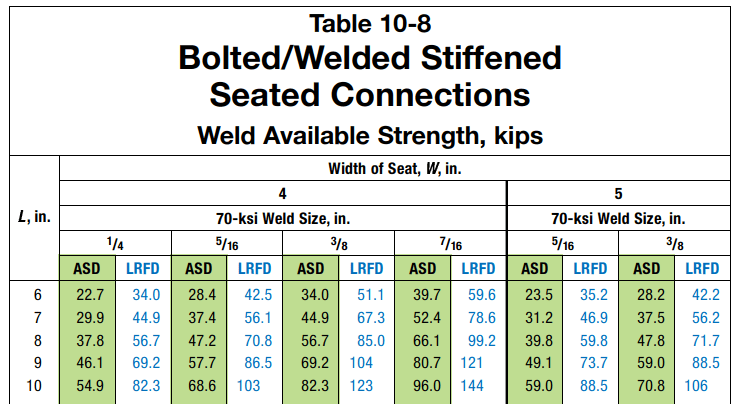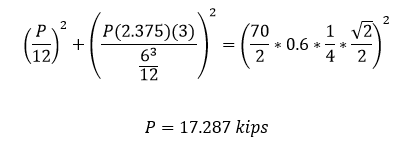How are the values for Table 10-8 of AISC Manual derived? I have read the commentary before the Table that it used the elastic method to calculate those values. I have tried solving (posted below) but can't seem to get the values written on the Table. To be fair, I am not sure with the eccentricity to be used. Where did I go wrong?

Solution below is for L = 6 in, W = 4, weld size =1. ASD --


Solution below is for L = 6 in, W = 4, weld size =1. ASD --

